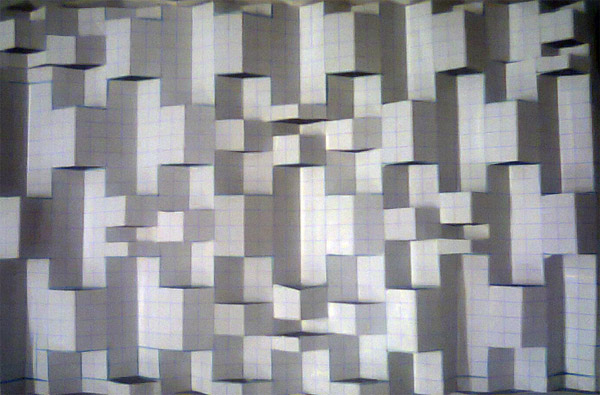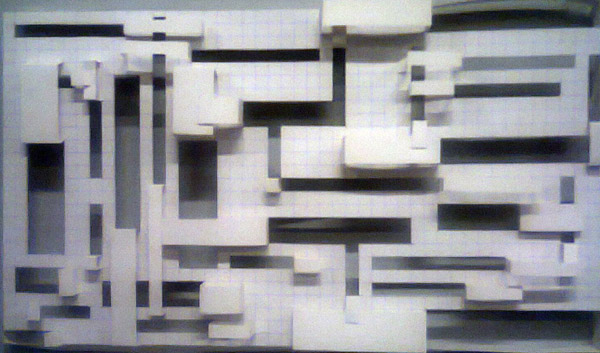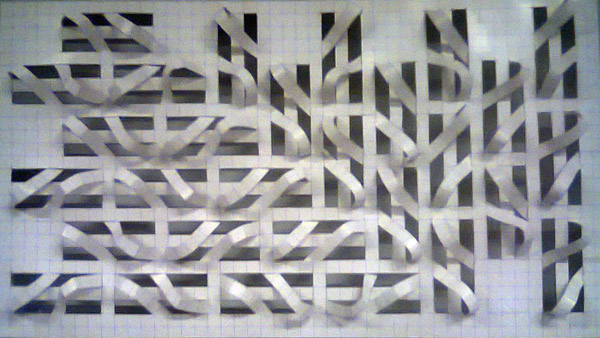Deviation
by Tuğrul Yazar | November 21, 2013 17:41

Basic Design I exercise called “Cut and Fold: Deviation” explores diversity within relationships and material behavior. It is initially introduced by Salih Küçüktuna as a simple but effective exercise platform. Below are some students’ works on this one-week exercise. The term “deviation” has many uses in a range of fields from medicine to sociology. However, it is frequently used in statistics with an interesting evocation to design computing:
In mathematics and statistics, deviation is a measure of difference between the observed value of a variable and some other value, often that variable’s mean. The sign of the deviation (positive or negative), reports the direction of that difference (the deviation is positive when the observed value exceeds the reference value). The magnitude of the value indicates the size of the difference.
When deviations refer to the difference between a variable and its value implied by some function of other variables, or between a variable and its value implied by the estimated version of that function, they are also known as errors or residuals respectively, and are applicable for data at the interval and ratio levels of measurement. When the reference point is simply a mean, deviations from the population mean are errors while deviations from the sample mean are residuals.
The sum of the deviations across the entire set of all observations from the overall sample mean is always zero, and the average deviation is zero.Wikipedia

Nur Özdamar

Meltem Bayrak

Cansu Karaman

Ayşe Pınar Girgin

Berat Bayrampınar
Source URL: https://www.designcoding.net/deviation/